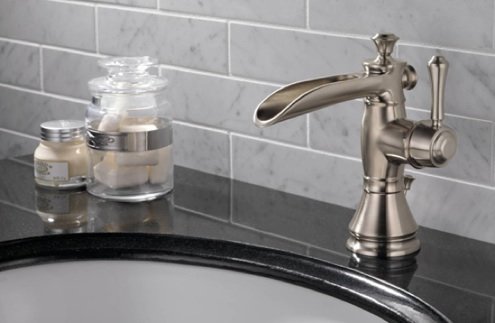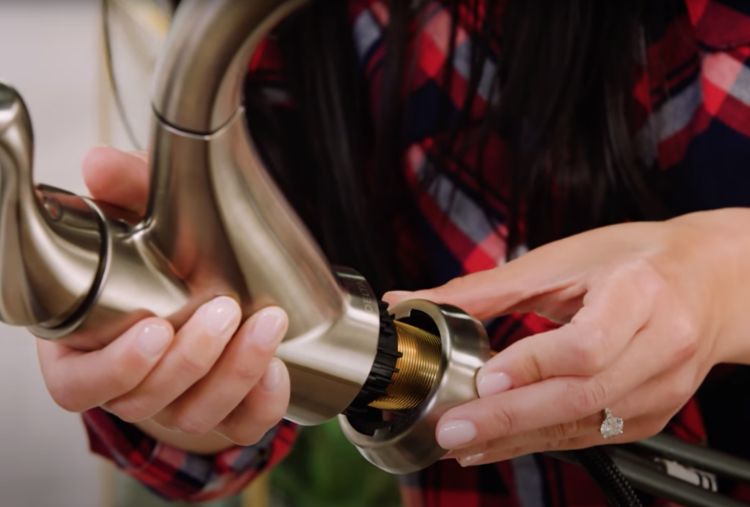Your Explanations Behind Correcting a Leaking Faucet
DetailAlmost everyone maintains their personal piece of advice when it comes to What Causes Leaky Faucets & How To Fix Them.

Leaking taps may look like a small hassle, yet their impact exceeds just the nuisance of the noise. From drainage to sustaining unnecessary financial prices and wellness dangers, neglecting a trickling tap can bring about different effects. In this short article, we'll look into why it's crucial to resolve this typical home issue without delay and effectively.
Waste of Water
Environmental Influence
Leaking taps add significantly to water wastage. According to the Environmental Protection Agency (EPA), a single faucet dripping at one drip per second can waste more than 3,000 gallons of water each year. This not just pressures water sources however also influences ecosystems and wild animals based on them.
Financial Expenses
Increased Water Costs
Past the environmental influence, leaking faucets can pump up water expenses substantially. The gathered waste over time equates into higher utility expenditures, which could have been prevented with timely repairs.
Potential Residential Or Commercial Property Damages
Moreover, extended dripping can result in harm to fixtures and surface areas surrounding the tap. Water accumulation can create discoloration, deterioration, and also architectural concerns if left neglected, leading to added repair service costs.
Health and wellness Concerns
Mold and Mildew Growth
The constant visibility of moisture from a leaking tap develops an optimal environment for mold and mildew and mildew development. These fungis not only jeopardize indoor air high quality but additionally posture health dangers, especially for individuals with respiratory system problems or allergies.
Waterborne Illness
Stagnant water in dripping taps can end up being a breeding ground for bacteria and other virus, increasing the threat of waterborne diseases. Impurities such as Legionella germs prosper in stagnant water, potentially leading to serious diseases when consumed or inhaled.
DIY vs. Specialist Fixing
Benefits and drawbacks of DIY Repair
While some might attempt to deal with a dripping tap themselves, do it yourself fixings feature their own collection of obstacles. Without correct expertise and tools, do it yourself efforts can worsen the issue or lead to incomplete repair services, extending the issue.
Advantages of Hiring a Specialist Plumber
Employing a professional plumber makes sure that the underlying cause of the trickling faucet is attended to properly. Plumbing professionals possess the proficiency and devices to detect and fix tap concerns successfully, saving time and minimizing the threat of additional damage.
Step-by-Step Guide to Fixing a Dripping Tap
Tools Called for
Before trying to deal with a leaking tap, gather the essential tools, consisting of a flexible wrench, screwdrivers, substitute parts (such as washing machines or cartridges), and plumber's tape.
Common Faucet Issues and Their Solutions
Recognize the type of faucet and the details concern causing the drip. Usual problems consist of damaged washers, corroded shutoff seats, or damaged O-rings. Describe manufacturer instructions or online tutorials for detailed advice on repairs.
Preventive Measures
Regular Maintenance Tips
To stop trickling taps, do regular maintenance such as cleaning up aerators, examining for leaks, and changing damaged parts without delay. Additionally, think about mounting water-saving gadgets or updating to extra efficient fixtures.
Significance of Prompt Repair Works
Dealing with dripping taps as soon as they're discovered avoids additional water wastefulness and possible damage, ultimately saving both water and money in the future.
Effect On Home Worth
Assumption of Well-Maintained Home
Preserving a residential property in good condition, consisting of resolving upkeep concerns like trickling taps, improves its viewed value and value among possible customers or occupants.
Impact on Resale Value
Properties with well-maintained plumbing components, including faucets, command greater resale values in the property market. Resolving leaking taps can contribute to a favorable impression throughout residential property evaluations and arrangements.
Environmental Duty
Private Contribution to Conservation
Taking duty for taking care of dripping taps straightens with broader initiatives toward water conservation and ecological sustainability. Every individual's activities jointly make a considerable effect on maintaining precious resources.
Sustainable Living Practices
By focusing on prompt repair work and embracing water-saving behaviors, people add to lasting living methods that benefit both present and future generations.
Conclusion
Dealing with a dripping tap surpasses simple benefit; it's a vital step toward saving water, reducing financial costs, and securing health and residential or commercial property. Whether through DIY repair work or expert aid, doing something about it to repair trickling faucets is a tiny yet impactful way to advertise responsible stewardship of resources and add to a healthier, a lot more lasting future.
How to Fix a Dripping or Leaky Faucet
A leaking faucet is one of the most common problems that homeowners encounter, but it being commonplace doesn’t make it any less annoying. The constant drip drip drip of a leaking bathtub faucet, showerhead, or sink tap can disturb your home’s serenity. Left neglected, a dripping faucet can also result in higher water bills and discoloration or mold growth in your sink or plumbing fixtures.
Fortunately, you don’t have to be a trained plumber to know how to stop a dripping faucet. With some basic tools, replacement parts, and a little patience, leaky faucet repair is a breeze. In this article, we’ll explain what causes dripping faucets and how you can fix them.
What Causes a Leaking Faucet?
Kitchen and bathroom faucets come in all manner of designs, but most involve some combination of valves, O-rings, seals, and washers. The O-ring is usually the weakest link, but any one of these pieces can wear down over time. Heat, moisture, temperature fluctuations, minerals, mold, and movement can contribute to warping and corrosion, breaking the watertight seal. This just comes with the territory of being a homeowner. Everything is always subject to wear and tear, and some component parts of your appliances and fixtures need to be replaced on occasion. At least replacement O-rings are cheap!
More rarely, dripping faucets can be a symptom of excessively high water pressure. Were this the case in your home, you would probably notice that the leak is not isolated to one faucet. Water pressure issues are harder to resolve on your own. We recommend contacting a professional plumber if you suspect your water pressure is too high.
How to Fix a Dripping Faucet
Pipe wrench or monkey wrench Allen wrench set Screwdrivers Old towel or rag Shut off the water.
Before you do anything, you need to turn off the water to keep from drenching your kitchen or bathroom. You should find a valve under the sink and against the wall. Once you’ve turned this valve, try turning the faucet on to confirm that the water source has been cut off.
If you can’t locate your local valve for the faucet you’re working on, you can always shut off the water to the house at the main valve. Of course, this will prohibit anyone from using the sinks, showers, or toilets while you’re working on the faucet that’s giving you trouble.
Plug or block the drain.
You’ll be disassembling the faucet and removing some small bits of hardware. Plug the drain with a stopper or rag to avoid the possibility of a small screw falling into your P-trap.
Take apart the faucet assembly.
There are several varieties of kitchen and bathroom faucets, each with its own manner of assembly. For detailed instructions on how to disassemble your faucet, you can refer to the fixture’s manual or contact the manufacturer. If you know whether you have a ball, disc, cartridge, or compression faucet, you can find detailed schematics online.
In general, you need to begin by removing the faucet handles. You might notice a small screw that you’ll need to remove with a screwdriver or Allen wrench. If you don’t see any visible securing hardware, it’s likely hidden under a decorative cap that can be unscrewed or popped off with flathead screwdriver.
Remove each piece methodically, consulting a schematic when necessary. Take notes or arrange the pieces in such a way to make it easier to correctly reassemble the faucet later.
Remove the cartridge.
Once you’ve removed the handles and securing hardware, you should be able to remove the valve cartridge or stem. Some cartridges will slide right out. Other faucet models will require you to loosen a nut with a pipe wrench before you can remove the valve stem.
Examine the exposed hardware.
With the cartridge or stem removed, inspect the component parts. Check the rubber O-rings for wear and tear. Also examine the seat washer for corrosion or other damage. These pieces are usually the responsible parties for a dripping faucet, but it’s worth inspecting the other component parts while you have the faucet disassembled.
Find replacement parts.
Once you’ve identified which faucet component has failed, find an identical replacement. Your local hardware store should have O-rings, seat washers, and other standard components in stock. If you have a luxury or uncommon faucet, you may have to contact the manufacturer for a replacement part.
It’s a good idea to take your old parts with you to the hardware store so you can compare them with the store’s inventory and be sure you’re purchasing the correct replacement.
Reassemble the faucet.
With your new parts in hand, reconstruct the faucet and handles. Don’t be tempted to overtighten screws or nuts. You might think this could create a better seal, but it can instead damage or bend a delicate part of the assembly and create a new problem for you.
Turn on the water and test the faucet.
The only thing left to do is test your work. Unplug the sink, turn the water back on, and try the faucet. Congratulate yourself on a job well done!
https://www.libertyhomeguard.com/how-to-fix-a-dripping-or-leaky-faucet/

I hope you enjoyed reading our excerpt on How to Fix a Dripping or Leaky Faucet . Thanks a ton for taking the time to browse our posting. Do you know anybody else who is curious about the niche? Take a moment to promote it. Kudos for being here. Revisit us soon.